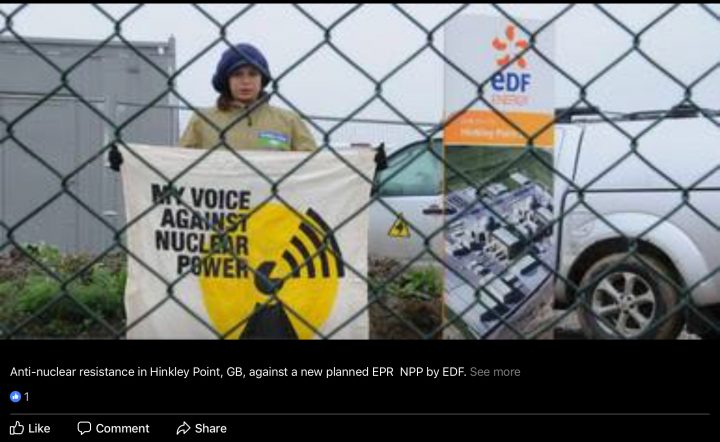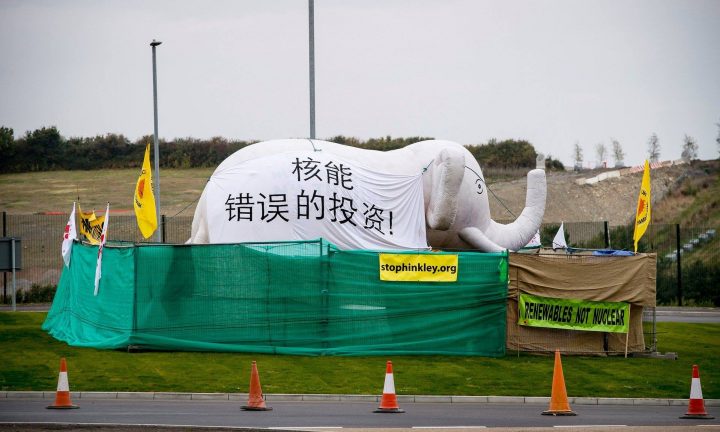Hinkley Point C is the latest in a long string of misguided nuclear policies.
Hinkley Point C makes no sense, least of all for electricity consumers. The foreign companies building the nuclear power station, EFF and the China General Nuclear Power Group (CNG), are footing £20.3 billion in construction costs in exchange for a 35-year deal with the British government for a guaranteed price for electricity. This inflation-linked £92.50 per MWh is more than double the current market rate. The government accepts that energy prices will not rise to make this deal worthwhile. The Department for Business, Energy and Industrial Strategy estimate that EDF and CNG will be paid £30 billion above the wholesale price of electricity.
Why, then, is the project going ahead? Some analysts point towards the military – a civil nuclear power programme is needed to keep the nuclear submarine business afloat. It is not clear, however, why this leads to Hinkley Point C. Surely, a cheaper way to keep Britain’s nuclear submarine industry in business could be found, such as supporting small modular reactors. Perhaps Hinkley can be justified in terms of Britain’s need to reduce carbon dioxide emissions. Yet, such a noble desire does not neatly lead to new nuclear power stations. Renewables are already cheaper and increasingly so. Could the project be about jobs? Maybe in part, but not in any well-thought-through way. As the Committee of Public Accounts concluded, the Department for Business, Energy and Industrial Strategy cannot say how, in precise terms, British companies and workers will benefit from Hinkley Point C.
Maybe history can shed some light on Britain’s latest atomic riddle, or at least point us in the right direction. Certainly, delving into the past helps to rid ourselves of the notion that the politics of nuclear power has been chiefly about the cheapest way to generate electricity. We see that political economy emerges centre stage, but not one which is immediately comprehensible. For much of the post-war period, the lure of the nuclear future was about all about British nationalism. Critics of nuclear power were dismissed as romantic environmentalists (‘brown-rice-and-sandals-brigade’ was a favoured prerogative of the time). But Britain’s intense nuclear nationalism was also attacked by experts inside the state who warned about misdirected public spending and inflated electricity prices, not that these Cassandras had much impact on policy.

For much of the post-war period, the lure of the nuclear future was about all about British nationalism.
For much of the 1950s and 1960s, Britain had the largest nuclear power programme in the world. Yet, most of these reactors were commissioned in full knowledge that they would be more expensive than conventional power stations. Even Treasury protests about profligate public expenditure could not cut through the nuclear nationalism. In 1960, Sir Christopher Hinton, the nuclear engineer who became the head of the Central Electricity Generating Board, Britain’s largest electricity supplier, told Treasury officials that that there was no point in trying to work out the cost differences between generating electricity from conventional means and from nuclear reactors. The number of nuclear reactors being built was not derived from such calculations, but from the amount of work the nuclear industry needed to stay alive. If Britain was to one day be the world leader in nuclear reactors, the industry had to be supported regardless of the cost.
Harold Wilson’s Labour government of 1964 to 1970 was more committed to nuclear chauvinism. In the late 1960s, the National Coal Board publicly complained about the Labour government’s refusal to commission any coal-fired power stations and argued that this was based on a misplaced faith in the cheapness of nuclear power. While successive ministers of power publicly quelled such doubt, economists attached to the cabinet office reinforced it. Do we really know with such certainty that they are wrong? asked Andrew Graham, the economic advisor to Harold Wilson. Why were these warnings ignored? Because politicians felt that the Labour government had to order several British-designed advanced gas-cooled reactors to show the world their confidence in the machine and thus gain export orders. As it happened, no AGR was ever exported. Yet, this brought little hubris. The Labour governments of the 1970s continued to back British-designed nuclear reactors, even when their officials told them that this could destroy the British power plant industry, which desperately needed export orders to stay alive. It was thought that only switching to the American designs would provide foreign orders. Labour politicians and union leaders, though, could not abide abandoning British-designed machines.
The Thatcher government was less autarkic and quickly announced their support for American-designed nuclear reactors. Yet, dreams of British export success in nuclear machines did not end there. It is telling that as prime minister, Margaret Thatcher, did not see the Three Mile Island accident as a warning, but as an opportunity. Thatcher argued that Britain could develop the first pressurised water reactor that incorporated the lessons of the accident, which would enable the nation to finally seriously enter the export market in nuclear machinery. Only in 1989 did the Conservatives abandon their ambitions for a nuclear power programme after the economic evidence against it became overwhelming.
Hinkley Point C could well symbolise the absurdity of an uncritical economic liberalism
How does all of this help us understand Hinkley Point C? Well, it demonstrates how throughout post-war British history, an irrational political economy guided nuclear power decisions. There is reason to think that this remains the case. Whereas nuclear power stations used to be built for the sake of a misguided economic nationalism, Hinkley Point C could well symbolise the absurdity of an uncritical economic liberalism – an atomic white elephant demonstrating the peculiar lengths the British government will go to attract Chinese investment.
Speaking in Beijing in 2015, George Osborne, as chancellor of the exchequer, described Hinkley Point C as a “win-win-win for the UK and… a great example of how the relationship with China has a direct material benefit to the people living in our country”. He also celebrated how the project opened the door for a new majority Chinese-owned nuclear power station at Bradwell. Those few senior Conservative figures who are publicly sceptical of the project also point towards the centrality of Chinese money. In 2015, Nick Timothy, then the director of the New Schools Network and future joint chief of staff to Theresa May, complained on Conservative Home that Hinkley Point C exposed a “desperate desire for Chinese trade and investment”. The deal seemingly silenced British criticism of human rights abuses and sidelined legitimate national security concerns about allowing China to build its own nuclear reactors in Britain. It is rather curious that despite the radical shift in Britain’s political economy over the past forty years, nuclear power is still capable of revealing its absurdities.










